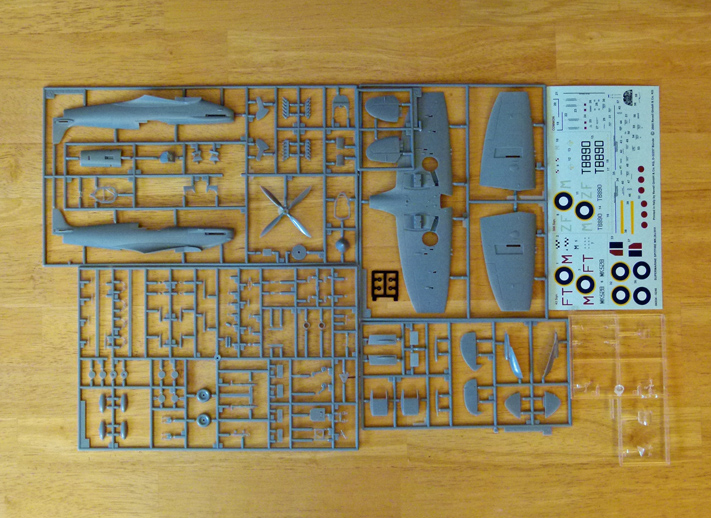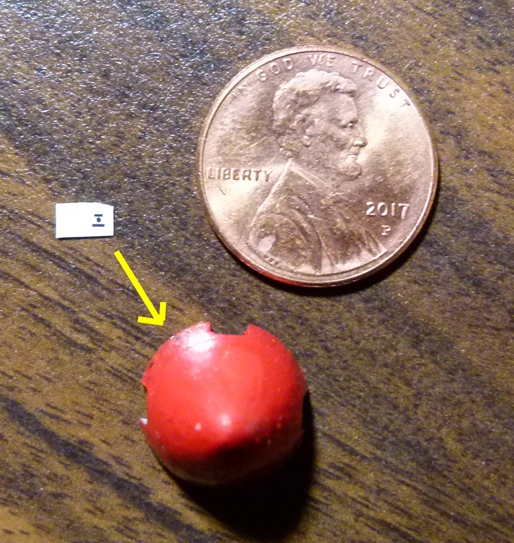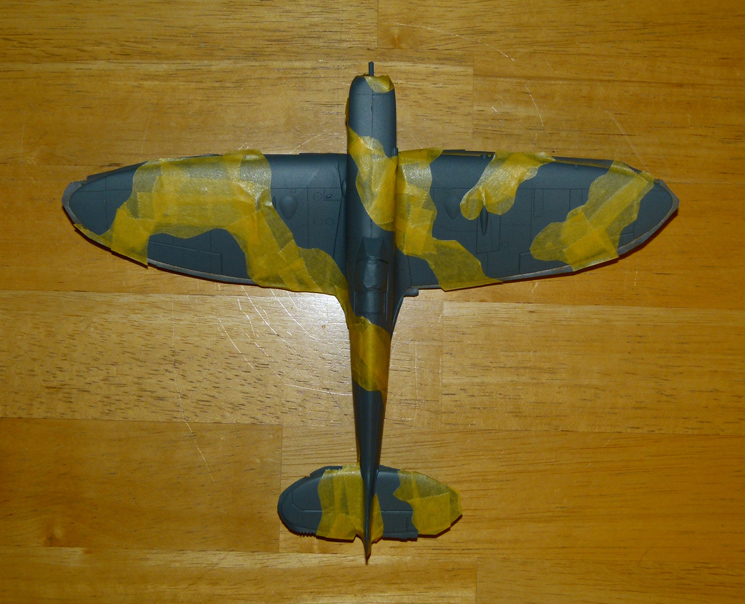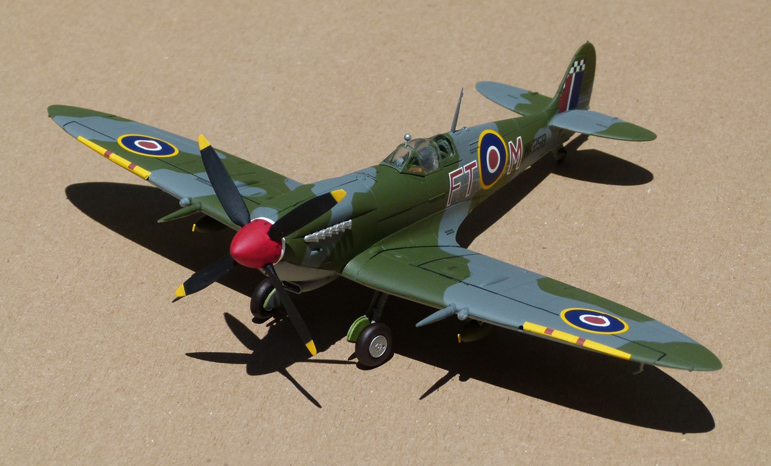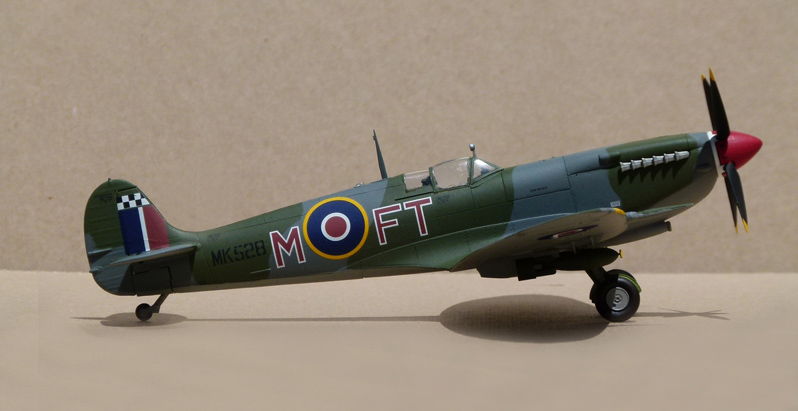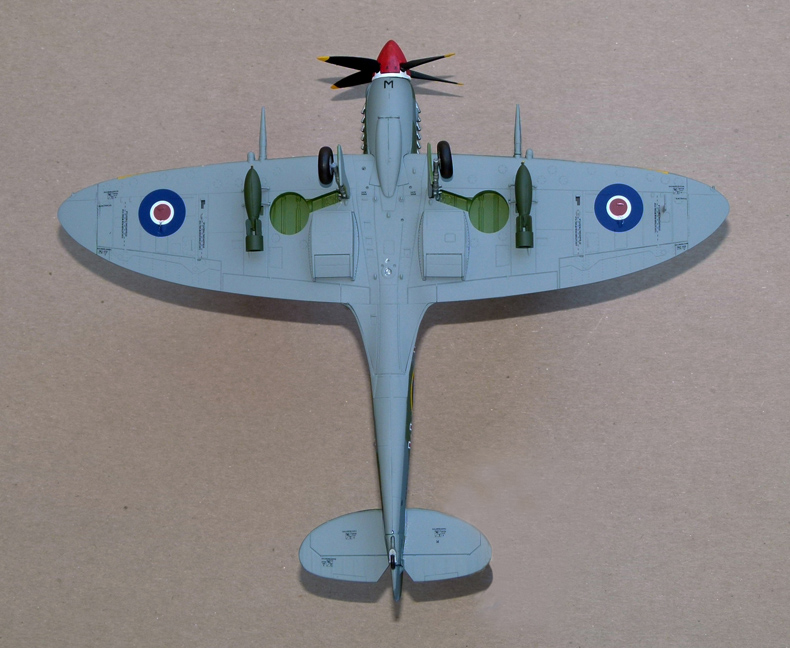

The Supermarine Spitfire is a British single-seat fighter aircraft that was used by the Royal Air Force and many other Allied countries before, during and after World War II. The Spitfire was built in 24 variants and many sub-variants with several wing configurations, and was produced in greater numbers than any other British aircraft. It was also the only British fighter to be in continuous production throughout the war. The Spitfire continues to be popular among enthusiasts; of the 20,351 Spitfires built, about 54 remain airworthy, while many more are static exhibits in aviation museums throughout the world.
The Spitfire was designed as a short-range, high-performance interceptor aircraft by R. J. Mitchell, chief designer at Supermarine Aviation Works, which operated as a subsidiary of Vickers-Armstrong from 1928. Mitchell pushed the Spitfire's distinctive elliptical wing (designed by B. Shenstone) to have the thinnest possible cross-section, helping give the aircraft a higher top speed than several contemporary fighters, including the Hawker Hurricane. Mitchell continued to refine the design until his death in 1937, whereupon his colleague Joseph Smith took over as chief designer, overseeing the development of the Spitfire through its multitude of variants. During the Battle of Britain, from July to October 1940, the Spitfire was perceived by the public to be the main RAF fighter, though the more numerous Hawker Hurricane shouldered a greater proportion of the burden against Nazi Germany's air force, the Luftwaffe. Spitfire units, however, had a lower attrition rate and a higher victory-to-loss ratio than those flying Hurricanes because of its higher performance. Spitfires in general were tasked with engaging Luftwaffe fighters (mainly Messerschmitt Bf 109E series aircraft which were a close match for the Spitfire) during the Battle.
After the Battle of Britain, the Spitfire superseded the Hurricane to become the backbone of RAF Fighter Command, and saw action in the European, Mediterranean, Pacific, and South-East Asian theatres. Much loved by its pilots, the Spitfire served in several roles, including interceptor, photo-reconnaissance, fighter-bomber and trainer, and it continued to serve in these roles until the 1950s. The Seafire was a carrier-based adaptation of the Spitfire which served in the Fleet Air Arm from 1942 through to the mid-1950s. Although the original airframe was designed to be powered by a Rolls-Royce Merlin engine producing 1,030 hp (768 kW), it was strong enough and adaptable enough to use increasingly powerful Merlins and, in later marks, Rolls-Royce Griffon engines producing up to 2,340 hp (1,745 kW). As a consequence of this, the Spitfire's performance and capabilities improved over the course of its service life.
Mk.IX Variant:
The first Spitfire Mk.IXs entered service in with the No. 64 Squadron RAF in July 1942, and from then on proved very effective in countering the Fw190s in the European and Middle East theatres. In production until the end of the war, 5,739 Spitfire Mk.IXs were produced.
Facts and General Characteristics of the Supermarine Spitfire Mk.IX:
Contractor: Supermarine Aviation Works
Type: Fighter, Fighter/bomber
Crew: One
Wingspan (C wing): 36 ft. 10 in. (11.2 m)
Length: 31 ft. 1 in. (9.5 m)
Height: 11 ft. 6 in. (3.5 m)
Weight: Empty 5,610 lbs. (2,545 kg), Max Takeoff 7,500 lbs. (3.402 kg)
Power Plant: 1,560 hp Merlin 61 or 1,690 hp Merlin 63 inline piston engine
Max speed at 25,000 ft. (7,620 m): 408 mph (657 km/h)
Ceiling: 43,000 ft. (1,106 m)
Range: 730 miles (1,200 km)
Armament: Two 20mm cannon and four .303 in. (7.69 mm) machine guns. Fighter/bomber versions could carry a 250 lb. (113 kg) or 500 lb. (227 kg) bomb beneath the fuselage and a 250 lb. under each wing.
Facts and General Characteristics of the Model:
The model represents a Supermarine Spitfire Mk.IXc flown by No. 43 Squadron, Royal Air Force, Klagenfurt, Austria, June 1945.
Manufacturer: Revell GmbH & Co. KG, Germany
Scale: 1/48
Wingspan: 9.1”
Length: 7.7”
Height: 3”
Parts: 106
Decals: 72
Hours to build and paint: 26
